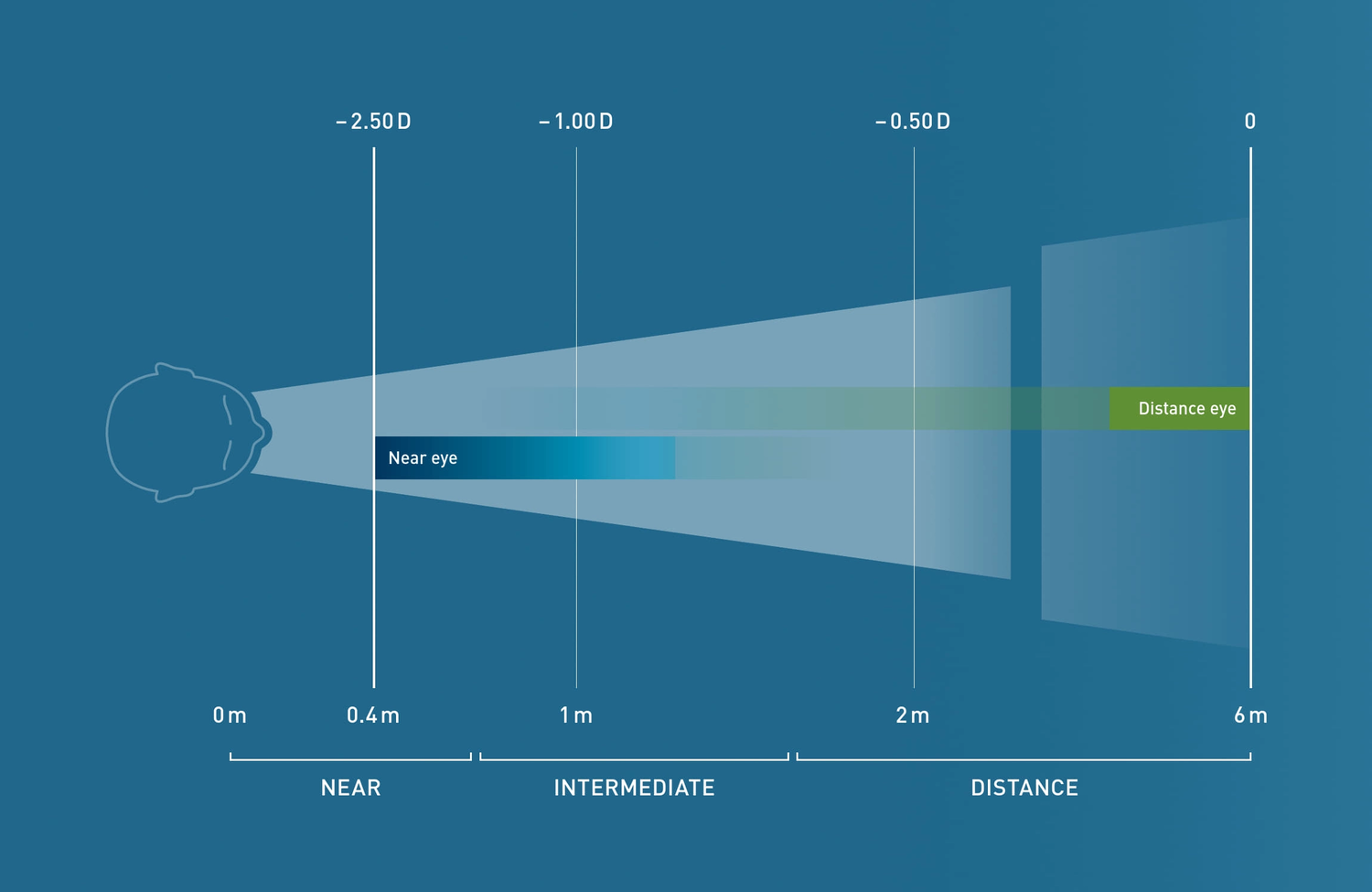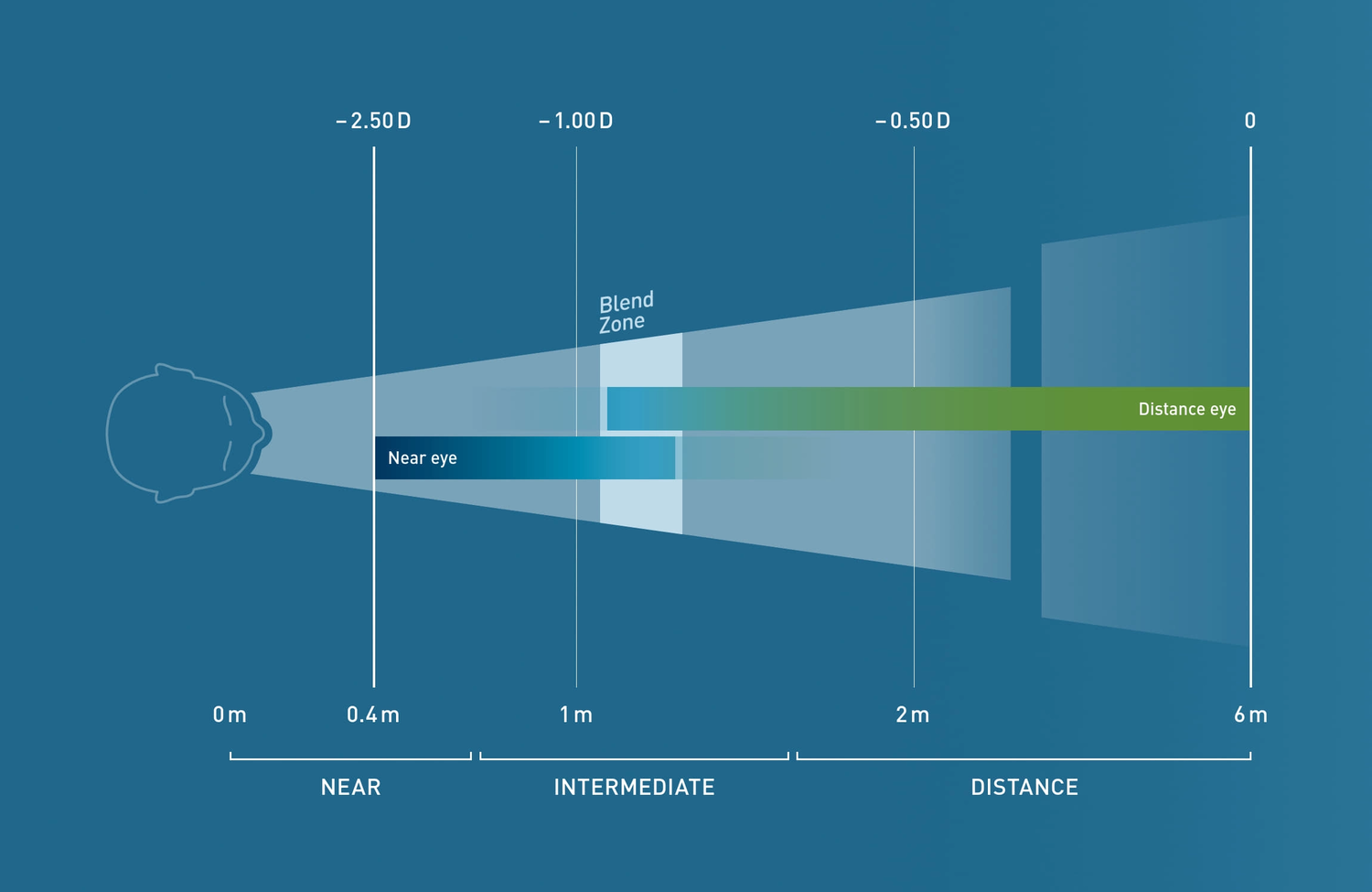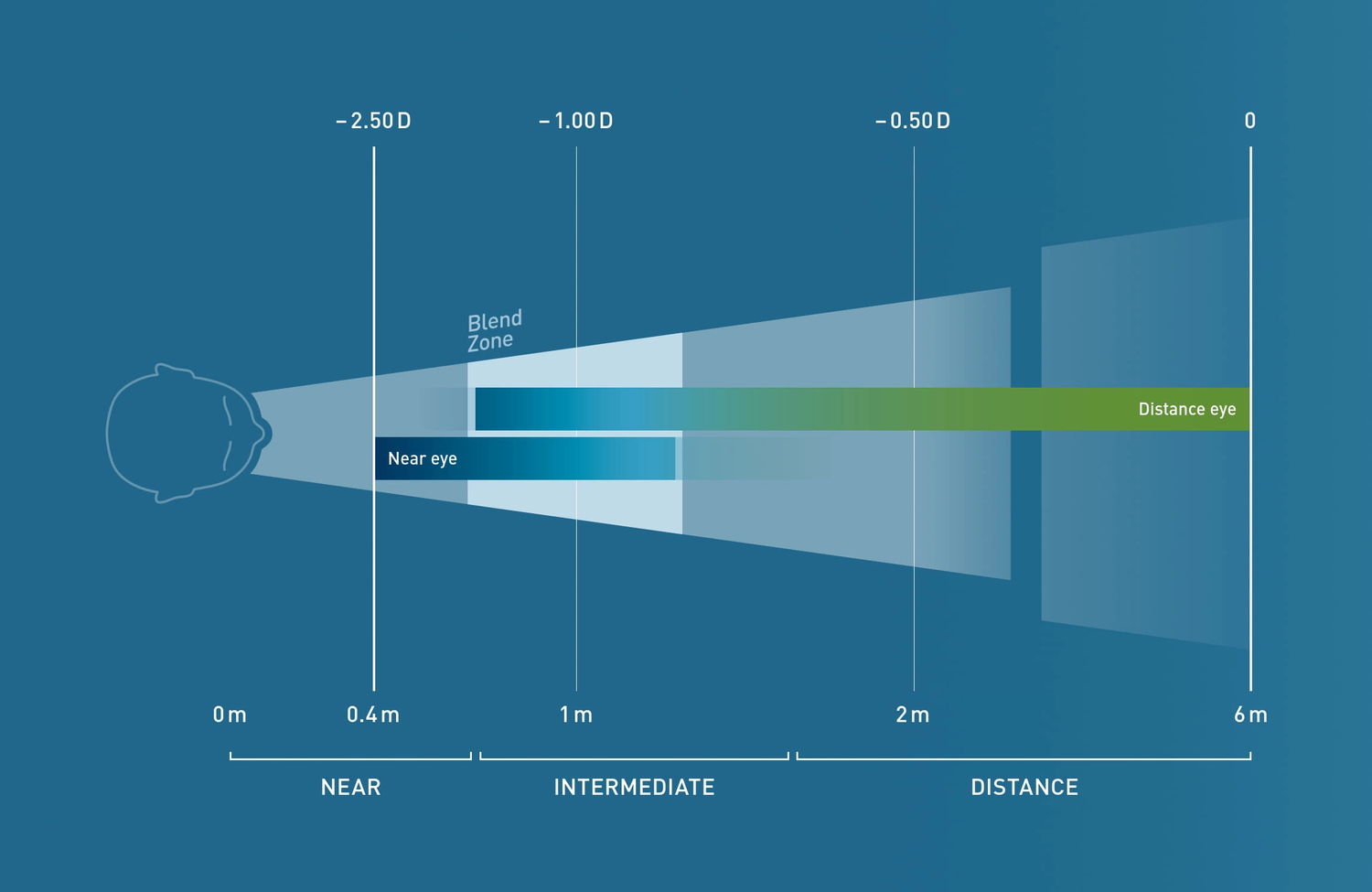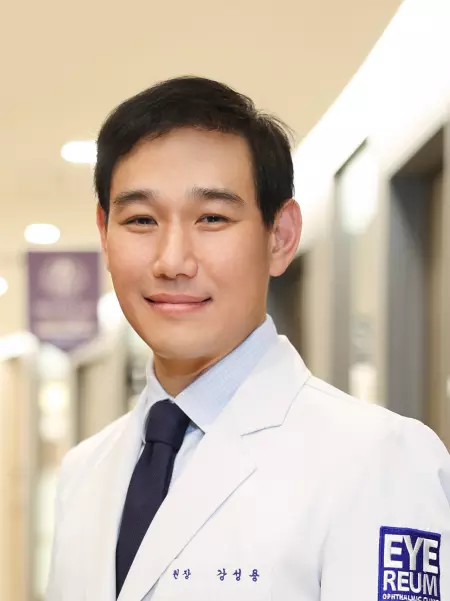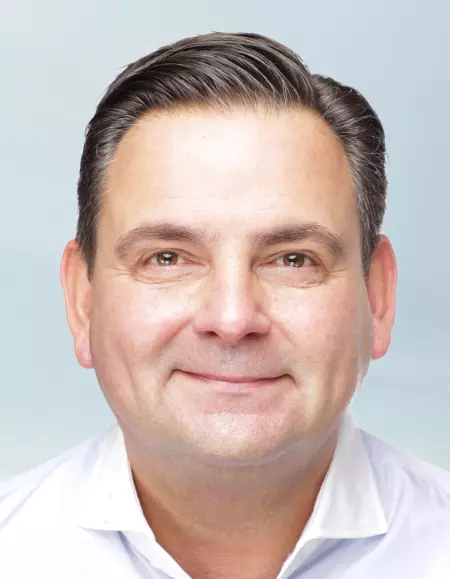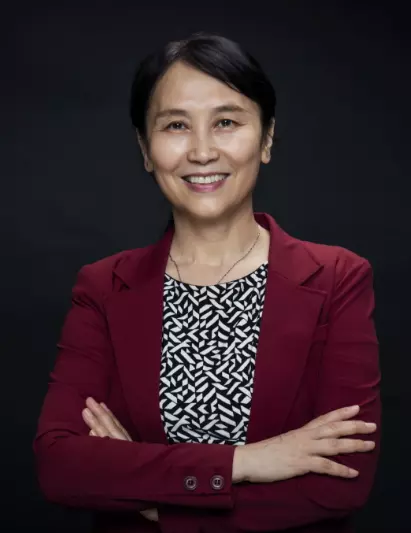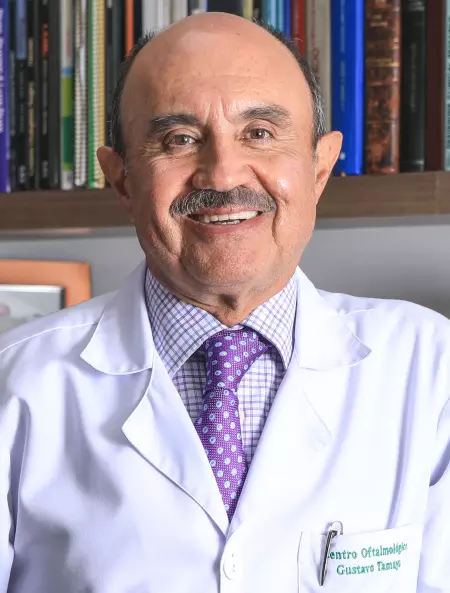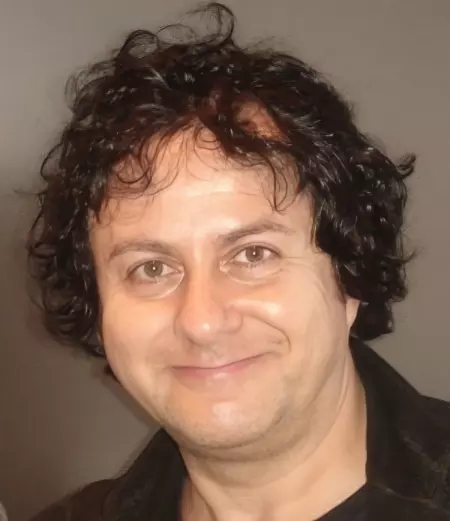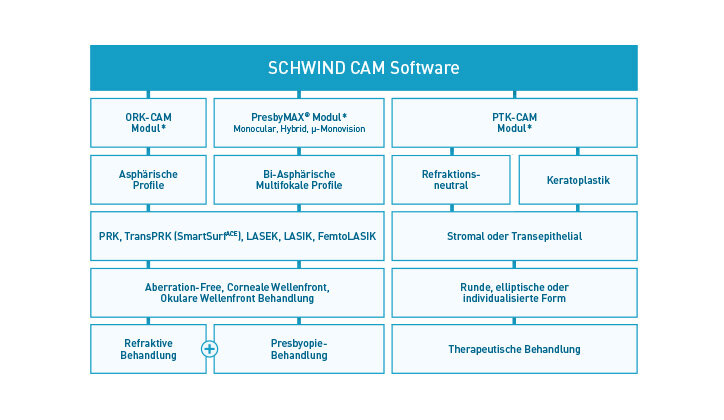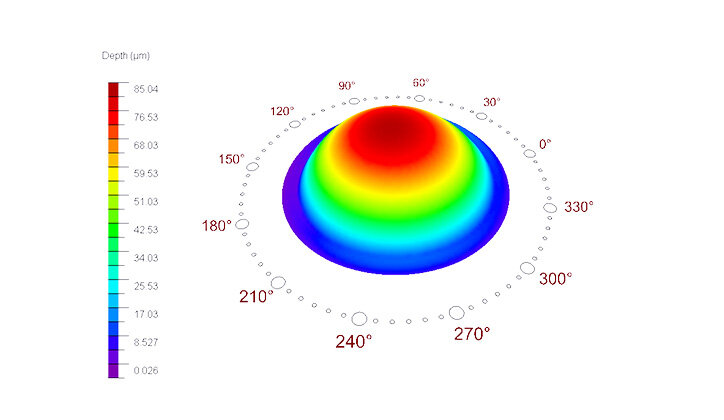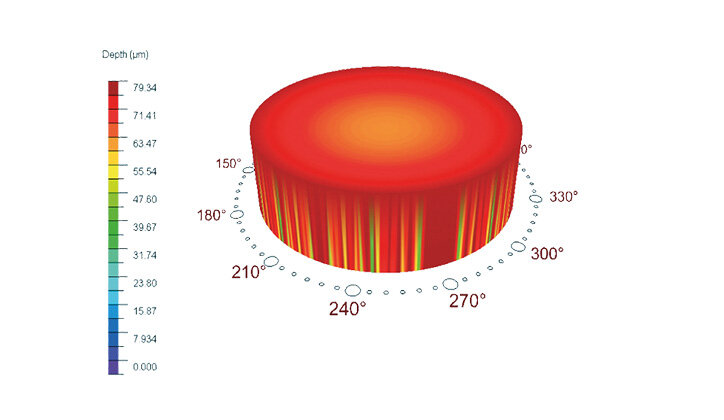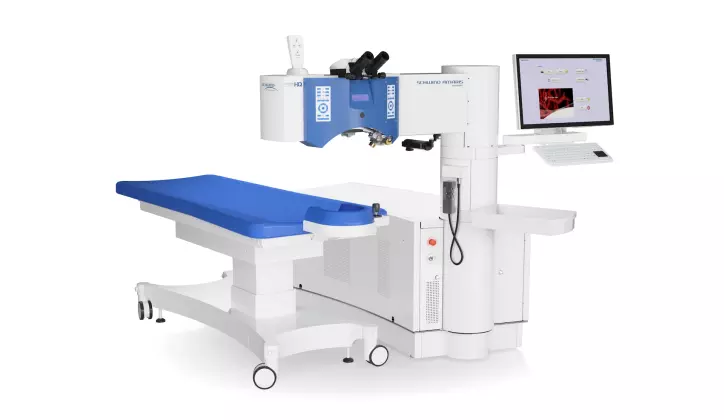TREATMENT TOOLS
PresbyMAX® – A universe of possibilities
Customizable presbyopia treatment planning
PresbyMAX® Presbyopia treatment
PresbyMAX is a presbyopia treatment performed using technologically advanced SCHWIND AMARIS eye laser systems. The treatment is completed in just
a few minutes, and the actual laser ablation takes only seconds. The procedure neither touches nor replaces the sensitive lens of the eye. Rather, rapid laser pulses gently model the cornea with high precision.
With PresbyMAX, you can offer your patients a broad spectrum of presbyopia treatment possibilities, tailoring the approach to their individual needs. Whether your patients require focus on distance vision, intermediate vision or near vision, PresbyMAX provides flexible options for all.
01
Flexible optical zone selection for optimal patient outcomes.
02
Applicable to both, surface and flap-based procedures.
03
Customizable treatment for spherical aberration and target refraction.
True customization
PresbyMAX is a customizable presbyopia treatment planning module of the SCHWIND AMARIS excimer laser family that integrates objective and subjective patient data to optimize binocular vision at all distances.
Surgeons can individually set parameters for controlled induction of spherical aberration and flexible amount of target myopia. Treatments are available in multiple modes – Aberration-Free, Corneal Wavefront-guided, or Ocular Wavefront-guided – supporting personalized strategies.
Versatility in every detail
PresbyMAX is designed to be straight-forward and effective. It allows you to choose from several treatment variants, ensuring that you can address a wide range of patient needs.
Freedom to personalize the so-called “Blend Zone”:
PresbyMAX® Monocular
One eye is 100% focused on distance vision. Depth of focus is induced in the near eye only.
Benefit
Provides superior distance vision for patients who need it in one eye while focusing near vision in the other. Easy transition from monovision-based treatments. With PresbyMAX monocular treatments, the procedure is easy to implement and offers fast recovery times, making it an attractive option for both patients and providers.
PresbyMAX® Hybrid
Different depth of focus values are induced in the distance and near eye.
Benefit
Offers fast vision recovery with good binocular vision at all distances, providing a balanced treatment option for patients seeking an all-around solution.
PresbyMAX® µ-Monovision
Induces same depth of focus in each eye. However, one eye is focused slightly more on the distance and the other eye more on the near vision.
Benefit
Ideal for patients who are focused on improving their near and intermediate vision. The procedure helps to potentially maintain maximum balance between the two eyes (stereo vision).
PresbyMAX® Reversal
A reversal treatment option further enhances the treatment capabilities.
What sets PresbyMAX® apart?
Unlike monovision treatments for presbyopia that relies on dividing the workload between the two eyes, PresbyMAX represents a different era in presbyopic correction. Using bi-aspheric ablation profiles, PresbyMAX extends the depth of focus (EDOF) offering patients good quality of binocular vision at all distances.
Stereo vision can be preserved and supported by having a so-called “Blend Zone”, that in particular the concepts of µ-monovision and hybrid offer. PresbyMAX delivers high patient satisfaction, even in cases of advanced presbyopia, making it an ideal option for your practice.1
Expand your practice with PresbyMAX®
PresbyMAX maximizes the capabilities of your SCHWIND AMARIS laser system, allowing you to broaden the treatment options and enables you to extend laser-based solutions to patient segments previously underserved. This potentially presents new opportunities for growing patient volume at your practice, considering the growing presbyopic population worldwide.2
The procedure provides an effective solution for treating presbyopia, avoiding invasive lens replacement surgery in patients with a clear crystalline lens.
By adding PresbyMAX to the list of laser treatments I offer, I have been able to significantly increase the number of annual procedures I perform.
Pierre Baudu
MD Clinique Avicenne
Le Port, Réunion
- Objective optical quality and visual outcomes after the PresbyMAX monocular ablation profile. Fu D, Zhao J, Zhou XT. Int J Ophthalmol. 2020 Jul 18;13(7):1060-1065
- Berdahl J, Bala C, Dhariwal M, Lemp-Hull J, Thakker D, Jawla S. Patient and Economic Burden of Presbyopia: A Systematic Literature Review. Clin Ophthalmol. 22. Oktober 2020;14:3439-3450.
Dr David Kang, Eyereum Eye Clinic, Seoul, South Korea
“The high versatility of the SCHWIND platform allows me to perform advanced customized corneal procedures on a wide range of patients, including those with presbyopia. I regularly perform KLEx in the distance eye and PresbyMAX corneal wavefront- guided (CW) ablations in the near eye. Both FemtoLASIK and SmartSurfACE (TransPRK) techniques are used depending upon the cornea. Lately I have found a passion for performing bilateral CW TransPRK in PresbyMAX Monocular for prior laser vision correction (LVC) eyes. After seeing its positive impact in terms of visual quality for both near and distance vision, my wife decided to undergo this procedure. She now sees me with younger eyes!”
Dr Detlev Breyer, Breyer, Kaymak & Klabe Augenchirurgie, Düsseldorf, Germany
“I currently use the SCHWIND AMARIS 1050RS in combination with the PresbyMAX Hybrid protocol to achieve laser blended vision — an approach originally developed for extended depth of focus (EDOF) intraocular lens (IOL) procedures and known as the ‘Düsseldorf Formula’.
The unique adaptability of the PresbyMAX planning module enables full customization of both the target refraction and the induction of spherical aberration (SphAb), tailored to the individual visual needs of each patient. This method, which I call PresbyEDOF, facilitates a personalized strategy for achieving EDOF.
In most cases, I target the near eye for a postoperative refraction of -1.50 D, combined with a controlled induction of 0.75 D of spherical aberration to create the desired EDOF effect. The distance eye, under the Hybrid profile, typically receives approximately 50 percent of the EDOF modulation applied to the near eye.
I was so confident about the precision and safety of SCHWIND technology that five years ago I chose to undergo PresbyMAX SmartSurfACE (TransPRK) myself. The outcome fully met my expectations. It also strengthened my enthusiasm in recommending the procedure to presbyopic patients with a clear crystalline lens as a safer alternative with better optical results in comparison to Clear Lens Exchange. For patient comfort and easier retouching, I personally prefer FemtoLASIK PresbyEDOF.”
Prof. Dr. Li Ying, Peking Union Medical College Hospital, China
“I have been successfully using the advanced PresbyMAX profiles to treat presbyopic patients between the ages of 43 and 57. I most frequently use the Monocular version in combination with FemtoLASIK; it has proven especially effective for patients with high near-vision demands, such as painters and surgeons, helping them extend their professional careers by restoring functional near vision.
Thanks to its patient-tailored treatment planning options, SCHWIND PresbyMAX allows for maximum flexibility in addressing the specific needs of Chinese presbyopic patients, who often present with preexisting myopia and astigmatism. A typical requirement in this population is to enhance near vision without compromising distance vision – a balance that PresbyMAX enables with precision.
My preferred approach is to target a low level of myopic defocus (approximately -0.50 D) in the non-dominant eye, combined with a moderate increase in spherical aberration. This setting corresponds to a near addition equivalent of about +0.50 D to +1.75 D, which offers a viable range of functional near vision while maintaining excellent distance acuity – particularly important for the visual demands of modern Chinese patients.”
Dr Gustavo Tamayo, Bogotá Láser Ocular Surgery Center, Colombia
“Using the SCHWIND AMARIS system, our method is to use the peripheral approach to treat presbyopia. This technique preserves the central cornea for distance vision, while the pericentral zones are modified for near vision. This method highlights the versatility of the AMARIS system and is indicated for all types of presbyopia, particularly in patients under 55 years of age. Originally envisioned and designed by Gustavo Tamayo and Mario Serrano in Bogotá, Colombia, the technique has garnered excellent results: over 88 percent of the patients achieve full independence from glasses, with no loss of corrected distance visual acuity.
The treatment is combined with (corneal or ocular) wavefront-guided ablation (CustomEyes) for patients who are myopic, hyperopic, or present astigmatism. The approach involves the application of a peripheral ablation with varying depths, inducing peripheral myopia (in the form of spherical aberrations) that enhance depth of focus without affecting distance (central) vision.”
Dr Alain Hagège, cataract and refractive surgeon, Paris, France
“I have specialized in refractive surgery for over 30 years, and have been exclusively using the AMARIS platform and PresbyMAX treatment for my presbyopic patients since 2018. Today I systematically use an addition of +2.25 D for my emmetropic and hypermetropic patients, whatever their age. I combine this with a target of around -0.25 D on the non-dominant eye, which I modulate depending on the ametropia. I can be a little more aggressive with the presby addition value for myopes.
I offer this treatment to patients who are keen to regain full autonomy in near and intermediate vision, and who are prepared to accept a slight correction for distance, even though they generally don’t need it in everyday life. I prefer μ-Monovision treatment to maintain maximum balance between the two eyes, but may opt for a Hybrid approach if the patient seems reluctant to compromise too much with distance vision.
I don’t worry about the risk of multifocal intolerance; I’ve encountered this very rarely with my patient selection process. I’m also reassured by my experience with the Presby Reversal option, which I was able to use for the retouching of one of my patients as well as others referred by colleagues. With this option I have achieved a best corrected acuity back to 10/10 in all cases.”

